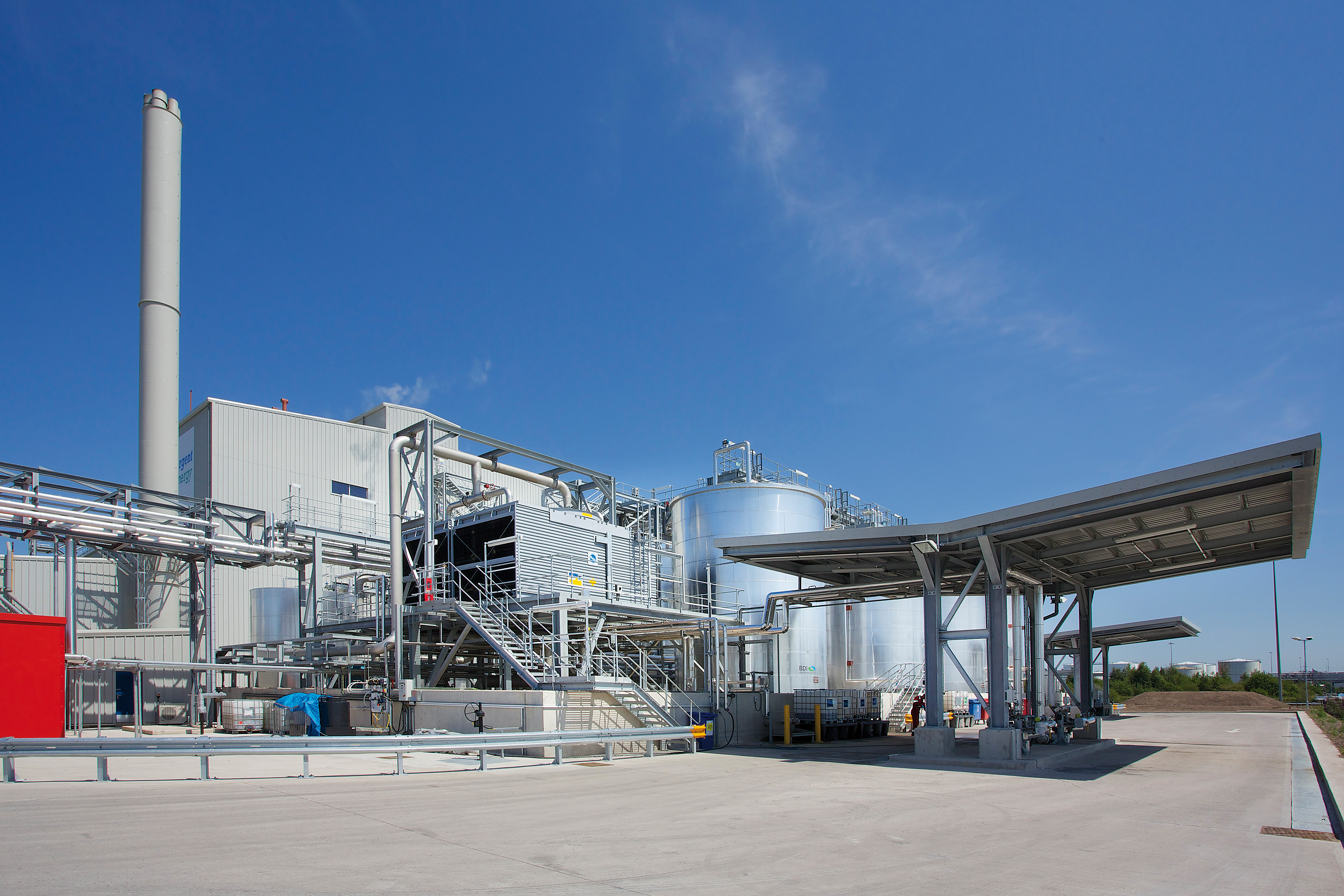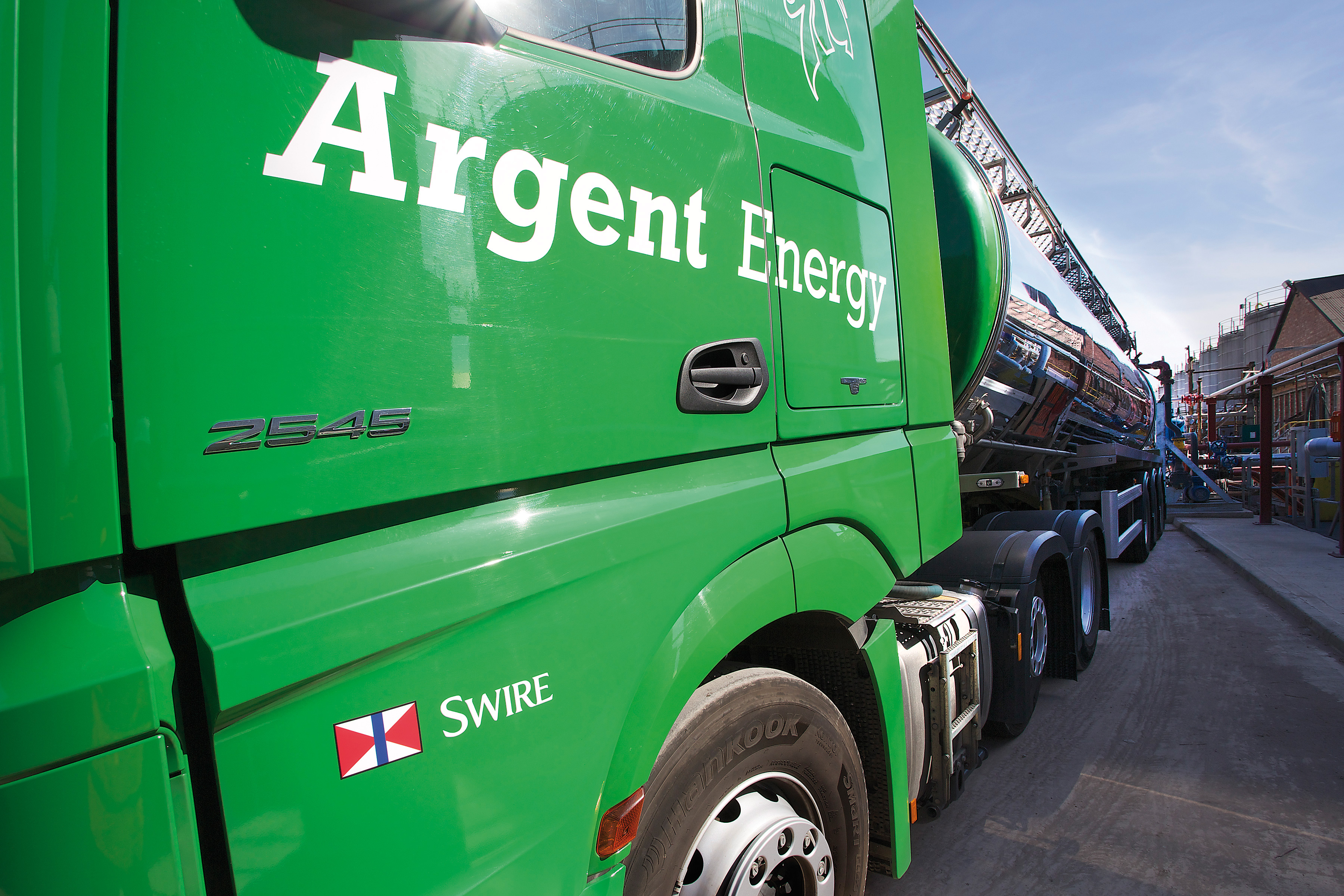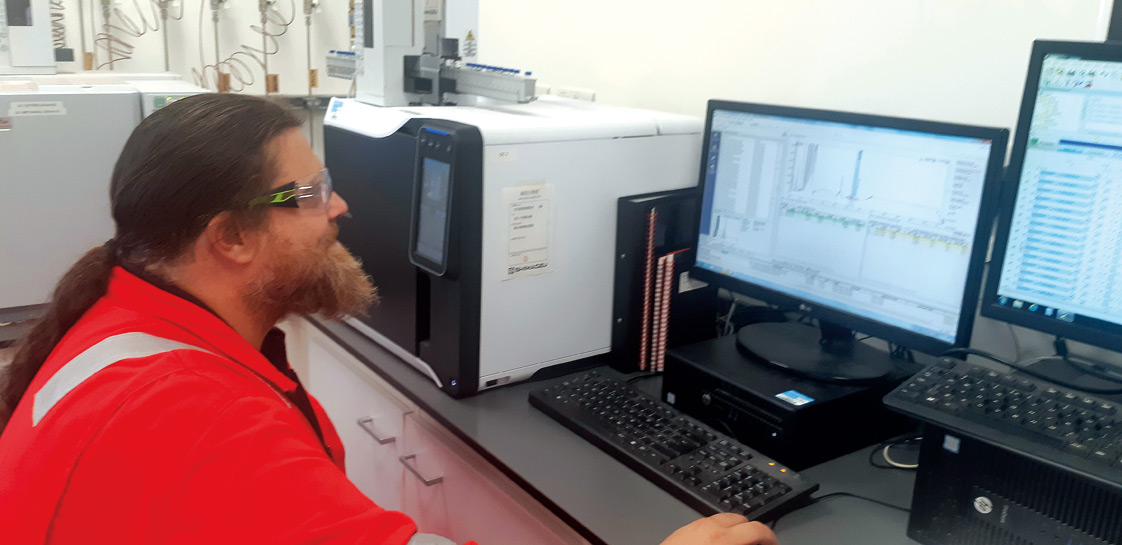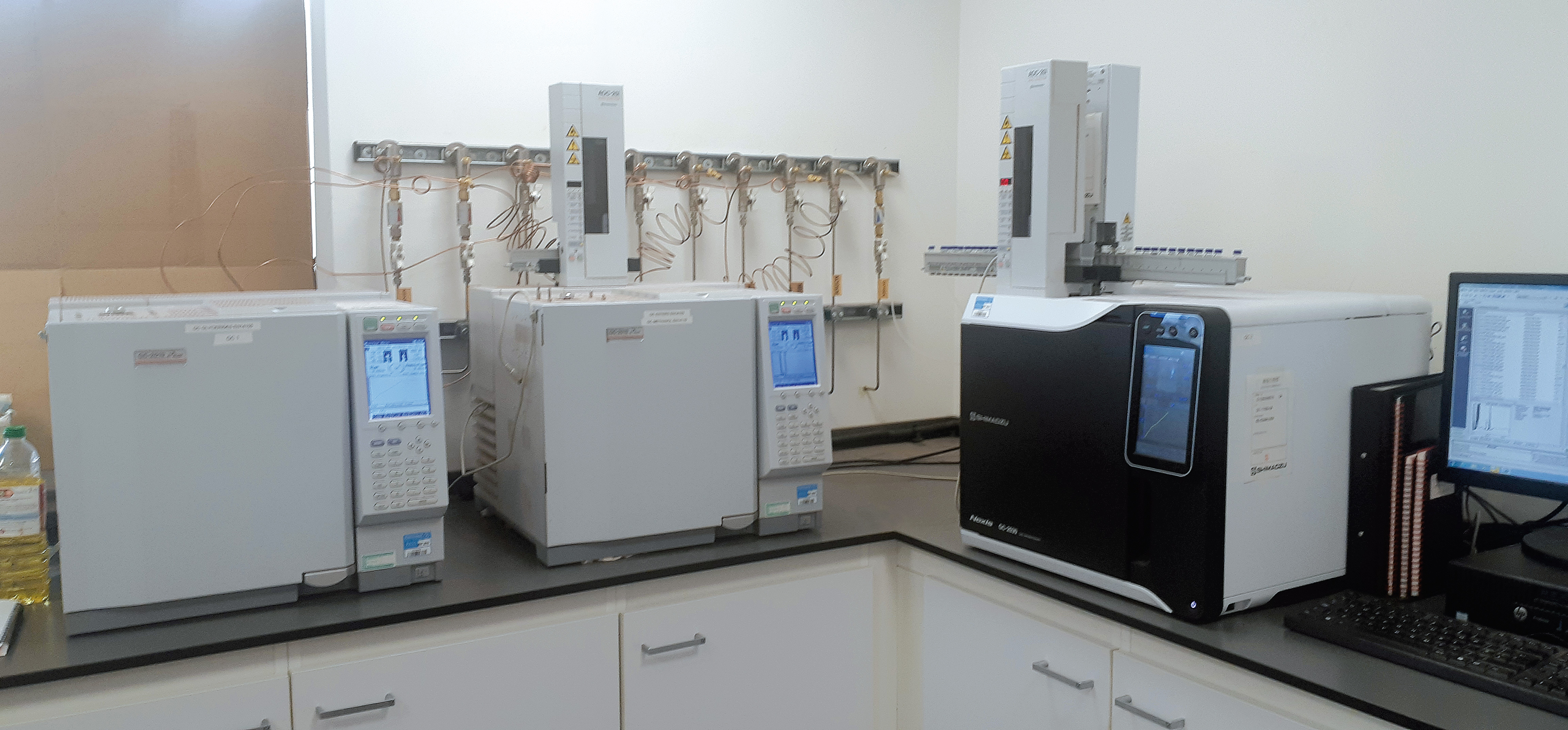From fatberg to fuel
Controlling the quality of biofuels with gas chromatography
 Biodiesel refinery of Argent Energy in the UK
Biodiesel refinery of Argent Energy in the UK
Argent Energy is the UK’s leading supplier of biodiesel, taking waste fats, such as used cooking oils, tallow and sewer grease, and turning them into high quality biofuel for the freight and transport industries. Despite the huge inherent variability in the starting materials, the company must reliably and consistently meet strict quality standards relating to the ester and glyceride content of the biofuels it produces. Argent Energy’s laboratory in Stanlow near Liverpool relies on a trio of gas chromatographs from Shimadzu to analyze its biodiesel, the latest addition being a Nexis GC-2030 that was installed to increase testing capacity and optimize production methods.
When travelling on a London bus, the journey may just have been fueled by Argent Energy biodiesel, perhaps even refined from the city’s own infamous fatberg, a monstrous blockage that was removed and some of it sent to the company for processing.
Argent Energy is the UK’s leading provider of renewable transport fuel, supplying biodiesel to the commercial freight and passenger transport industries.
The company produces biodiesel at sites in Motherwell near Glasgow, Scotland and Stanlow near Liverpool, England by refining waste oil streams from plants, factories and the food and restaurant industries.
From fatberg to fuel
To get from fatberg to fuel, Argent Energy must undertake several rounds of laboratory testing – screening of raw materials arriving at the refineries, in-process testing and analysis of the end product – all overseen by scientists working in Stanlow’s production, QC and R&D laboratories.
While the production lab typically uses basic titration methods to monitor the raw starting materials, both the QC and R&D labs depend heavily on gas chromatography (GC) for process optimization and end product testing to ensure that the legal maximum allowable amount of total glycerides in biodiesel (0.2 %) is not exceeded.
Steve Lindley, QC Laboratory Manager at Stanlow, explained: “During the refinery process, we need to convert all the glycerides into an end product that is close to 100 % esters. To ensure that we have achieved this, we use GC to screen for trace amounts of any remaining glycerides and to determine the ester content of the biofuel. We are looking for really low levels of triglycerides, and the Shimadzu instruments are great for this type of work, not least because they support a temperature program of between 270 and 400 °C – a real challenge of glyceride screening that not many GCs can handle.”
 Truck with biofuel for passenger and freight transport
Truck with biofuel for passenger and freight transport
Leave no trace
Although until recently the QC and research labs at Stanlow have shared two Shimadzu GC-2010 instruments, they have very different analytical needs, which has presented some operational hurdles. Whereas the QC lab performs trace analysis, the research lab’s main remit is method development and process design, involving regular handling of samples of vastly differing composition to those of the QC team, and there was a clear need to separate the workflows.
Lee Knight, Process Development Chemist in the R&D lab, explained: “The composition of the feedstocks we receive varies tremendously. We never get the same raw material twice, and so we have to work on a case-by-case basis and vary our processes accordingly. Today’s raw materials vary widely in glyceride content and composition. We now need to look for anything between 10 and 70 % triglyceride in our mid-process samples – it really can be that high. This was overloading the columns we had, and detection wasn’t optimal.”
Steve Lindley added: “Combining trace and high concentration analyses on the same instrument presents a challenge for the QC lab. With the glycerides, we’re looking at very, very low levels. If we then put samples with a high concentration of analyte through the same system, it can contaminate the column and yield weird results. There was a real need to separate the two types of testing, and so we got in touch with Shimadzu to see what solutions the company could offer.”

 Laboratory work: testing in the production process and analysis of the final product
Laboratory work: testing in the production process and analysis of the final product
Expansion to Nexis GC-2030
Shimadzu’s GC application specialists evaluated several potential solutions for Argent Energy before recommending the recently launched Nexis GC-2030 dual column instrument with FID detectors. For convenience and ease of use, the system includes two autosamplers – one for each column – enabling overnight analysis of non-urgent samples with instantly-accessible results ready and waiting in the morning. Lee Knight observed: “Column installation is much easier with Shimadzu’s ClickTek connectors than with conventional screw thread fittings, and the inclusion of a light inside the oven means that you can actually see what you are doing. The system’s touchscreen operation is straightforward, and so users, whether they are new to GC or already familiar with Shimadzu software, can learn how to use the instrument with little more than a day’s training.”
Steve Lindley said: “The support we receive from Shimadzu is quite hands-on; its technical specialists did a lot of behind-the-scenes work to identify suitable starting configurations and set-ups, and will always speak to us on the phone, via email, or even drop in to the lab. The Nexis is Shimadzu’s latest GC system, offering even better detection capability and greater sensitivity for our work. Having a third GC will relieve the burden on the other instruments and allow us to separate trace and high concentration analyses.”
An early adopter
The Nexis GC-2030 is still a relatively new addition to the Argent Energy lab bench, having been installed just a few months ago, and the company is exploring its capabilities for existing and potential applications. Steve Lindley commented: “We were one of the first companies in the UK to take delivery of a Nexis GC-2030, and we’re experimenting with how we will use the system in the long term. At the moment, we’re running two different columns to see which one gives us the best results; it may be that we find one type is best for samples with high analyte concentrations and another for low concentrations.”
Future plans
Moving forward, the plan is to continue to perform trace glyceride and ester content analysis on the two GC-2010 and use the Nexis to support in-process testing, method development and process development to optimize the plant operating conditions. Lee Knight: “We’re now looking at the next stepping stones in method and process development, which is where the main gains are at present, for example to understand how the processing method can be refined to save on reagent costs, increase throughput and improve quality and consistency, moving towards a better, more effective steady state. It’s a work in progress, but if we can perform fewer treatments of the in-process samples, we would benefit from even greater reliability of our results. To support all that, we need to perform more detailed in-process and feedstock analysis, which is where the Nexis GC-2030 will be a big advantage in helping us to achieve our objectives.”